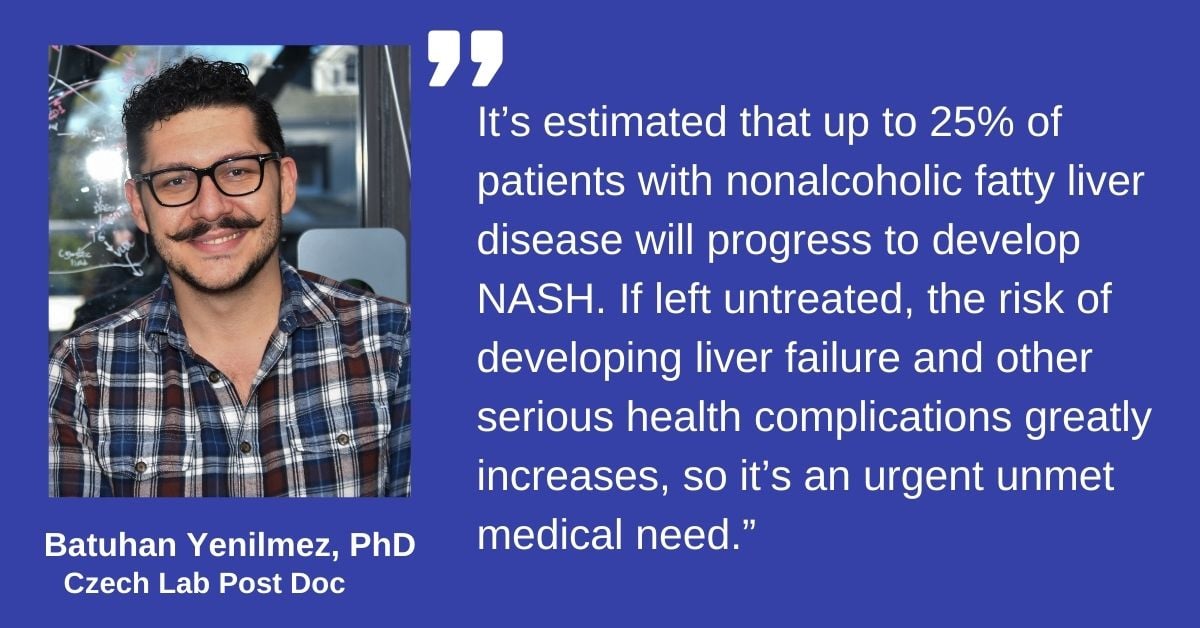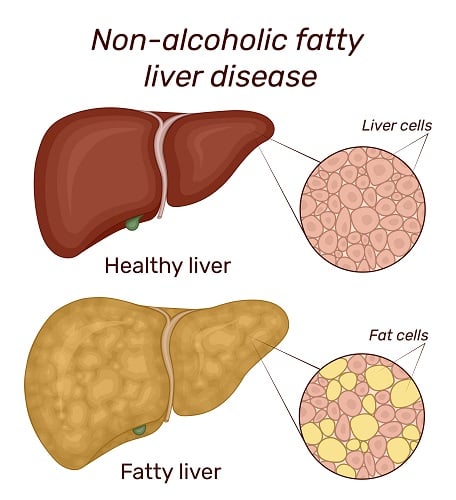Identifying Therapeutic Targets Using RNAi Technology to Treat Non-alcoholic Steatohepatitis (NASH) in the Czech Lab
Date Posted: Thursday, December 09, 2021
Nonalcoholic fatty liver disease (NAFLD) affects up to one billion people worldwide and often co-exists with type 2 diabetes. One such NAFLD called nonalcoholic steatohepatitis (NASH) is a severe liver disorder characterized by accumulating triglycerides and severe inflammation. NASH is currently the leading cause of liver transplants, however, there are currently no FDA-approved therapeutics available to specifically address it.
The research laboratory of Michael Czech, PhD is targeting genes that promote fatty liver and inflammation in obesity and diabetes with short-interfering RNA (siRNA)-induced RNAi as a potential NASH therapy.
“Right now, it’s estimated that up to 25% of patients with nonalcoholic fatty liver disease will progress to develop NASH,” said Batuhan Yenilmez, a recently minted PhD degree recipient and current postdoc in the Czech lab who is leading the research efforts. “If left untreated, the risk of developing liver failure and other serious health complications greatly increases, so it’s an urgent unmet medical need.”
RNAi-based therapeutics is revolutionizing the treatment of liver diseases. Recent chemical advances supporting long-term gene silencing are using an injection, similar to an insulin shot.
In a newly published study in the scientific journal Molecular Therapy, Yenilmez and his colleagues performed preclinical studies using “humanized mice” from the UMass Diabetes Center of Excellence laboratory of Michael Brehm, PhD. The humanized model was used to show that their compound can successfully target human mRNA in vivo. The collaborative research included the lab of Anastasia Khvorova, PhD from the UMass Chan Medical School’s RNA Therapeutics Institute and Program in Molecular Medicine.
“We’re targeting gene products known to enhance fatty liver and NASH in animal models,” added Yenilmez. “Our ultimate goal is to advance this technology and treatment to human clinical trials.”'

Upon injection into genetically obese NASH mice, the therapy resulted in up to three months of success deleting the intended gene(s), plus significant improvement of the fatty liver phenotype. The reduction in liver fat did not translate into a similar impact on inflammation and fibrosis. So, while it could be a practical, long-lasting silencing agent for a potential liver steatosis therapy, combinatorial targeting of a second pathway may be necessary for success against NASH.
“Advances in siRNA design and chemistry have already overcome many previous limitations,” said Dr. Czech, The Isadore and Fannie Foxman Chair of Medical Research, Program in Molecular Medicine, at UMass Chan. “Our research team has already begun additional studies to get us closer to the end goal.”
To learn more about their experiments, including specific techniques and results, the full publication titled “An RNAi therapeutic targeting hepatic DGAT2 in a genetically obese mouse model of nonalcoholic steatohepatitis” can be hound here.
